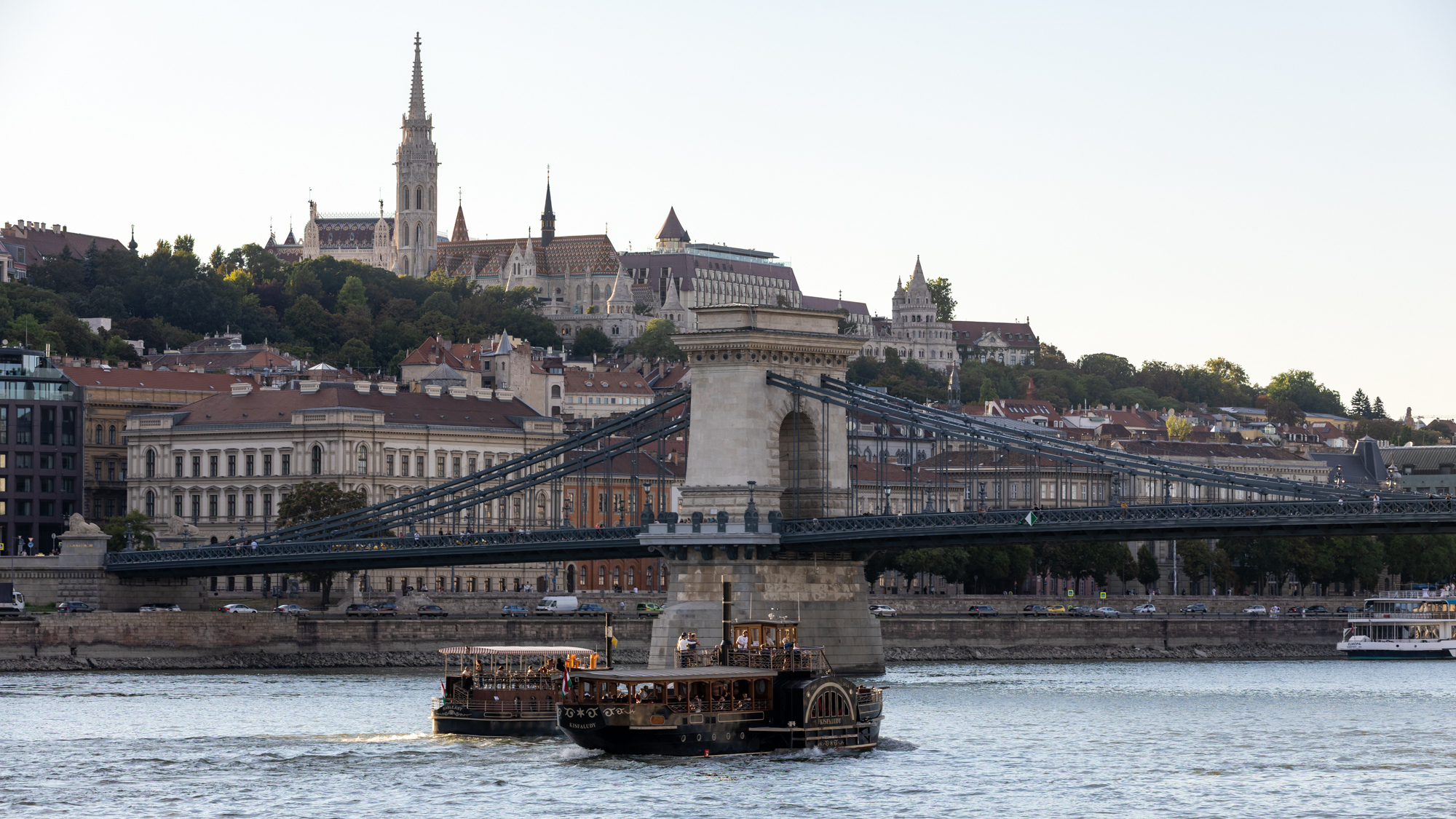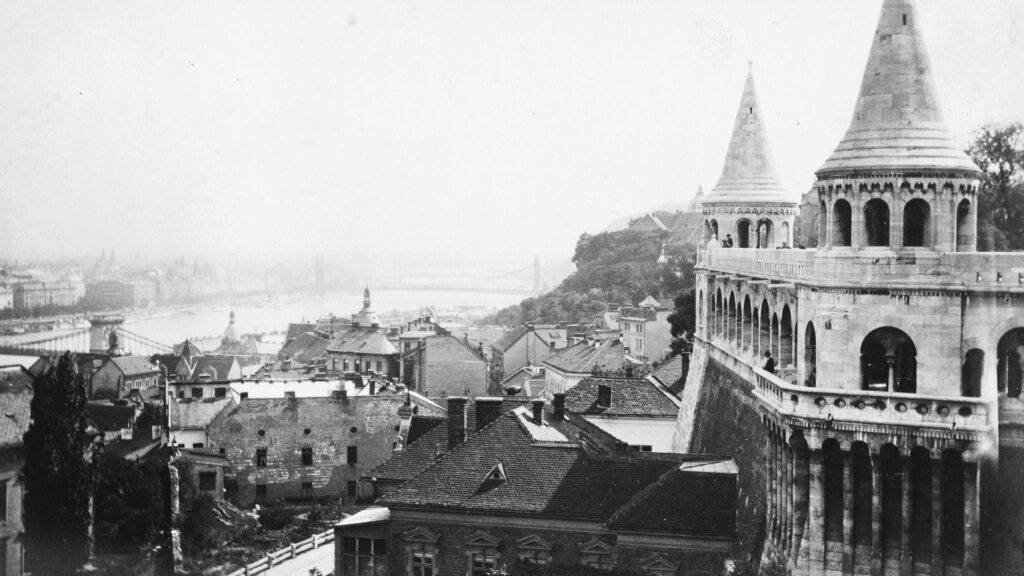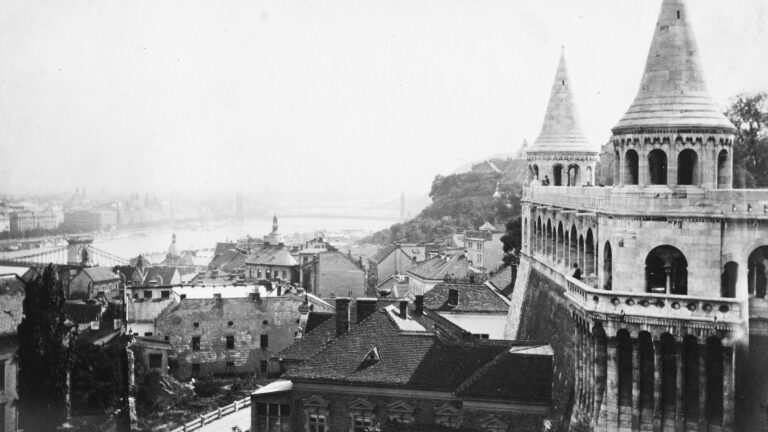I had visited Budapest twice in my adult life before moving here this summer. Each time, I was struck by the magnificent imperial architecture lining the streets. It feels as if one is still in an imperial city, as it was just over a century ago.
Unlike most European countries, Hungary and Budapest have chosen a distinctive path in urban development and cultural preservation. I notice this daily on my walk from the bus to the Danube Institute, passing the Castle, the reconstruction of Archduke Joseph Palace, and the Red Cross Headquarters. The same impression comes during evening walks near the Parliament: a deep pride in history and culture, but also a clear political priority in a field where Hungary is a pioneer—the politics of beauty, especially in architecture.
Zsófia Tóth-Bíró wrote three years ago in Hungarian Conservative that Hungarian architecture is ‘not exactly world famous.’ That surprises me, living in the inner city and working in the Castle District. Her article reminded me that the pristine state of the Fisherman’s Bastion and Matthias Church is no coincidence.
Since entering office in 2010, the second Orbán government has launched what the writer calls ‘a renaissance of Hungarian architecture’, beginning on Castle Hill with the Hauszmann Programme starting in 2014, named after the district’s great 19th-century architect.
‘Unlike most European countries, Hungary and Budapest have chosen a distinctive path in urban development and cultural preservation’
In Budapest, not only have the Hungarians worked to build and restore buildings beautifully, but also to remove modernist intrusions, reclaiming space for beauty.
An article in Bloomberg suggests this is a project for Orbán to ‘leave his mark’ on the capital. To me, it seems that he foresaw something the Western elites had missed. Political trends, like time itself, change. This time, it is becoming more pro-traditional in architecture than ever before.
A good example of this I do find back home in Sweden. It has become more popular than ever for politicians to compete over who wants to build the most beautiful. Until recently, architects and officials competed instead to disfigure their cities with modernist and postmodernist blocks. Suburbs from the 1960s onward are filled with such scars, but so too is Stockholm: buildings like Läkarhuset at Odenplan, Norra Tornen, and Arkitekturskolan are glaring intrusions in otherwise classical surroundings.
Now, all parties have made a 180-degree turn on the issue. The moderates in Staffanstorp built in 2016, Jakriborg, and as of this summer, even the Social Democrats went out and said they wanted to build in neo-traditional architecture buildings.
Sure, Stockholm remains one of the most beautiful capitals in Europe and the world, undoubtedly one of the cleanest, but architects and politicians have long done their best to make it as ugly as possible.
This trend has also been growing in Sweden. Thankfully, opposition to functionalism, brutalism, and postmodern architecture is gaining momentum everywhere. The most famous newly formulated example of this is Donald Trump and the President’s executive order titled ‘Promoting Beautiful Federal Civic Architecture’ for federal buildings in the USA.
Other famous projects have taken place around Europe, before Trump did his part in the battle for European beauty standards: After World War II, Dresden was rebuilt to its pre-war state. Even before becoming king, King Charles III had his own pet project, Poundbury, located in the south of England, in collaboration with the architect Léon Krier, which created a small city in a traditional architectural style.
Surely both Dresden and Poundbury started way earlier than the Hauszmann project in Budapest; both did not finish until the 21st century.
The seeds that could have been planted in the public’s mind clearly did not find their way from there.
The change in public sentiment must have come from somewhere else. Social media for sure is one thing, but I do not know anyone who has been to either Poundbury or Dresden (although the latter is not a strange travel destination in any sense) sharing pictures.
However, most people I know have actually been in Budapest. Travel and social media have their faults, but clearly, they did something good here.
Travel and social media have their flaws, but in this case, they complemented each other. I think of Sweden’s Arkitektupproret (Architectural Uprising), now with almost 100,000 followers online. They spread awareness through simple comparisons of beautiful and ugly buildings, including many examples from Budapest. Their viral ‘walk-around roasts’ of new Stockholm districts have repeatedly gone viral domestically.
Their most tremendous success has been to show that politics can, in fact, ‘just do things’. The Fidesz government proves this. Every visitor to Budapest sees it and instinctively measures their own cities against it.
So What Sets Hungary Apart from Sweden, Britain, or the US?
First, communism. Or rather, its absence in much of Western Europe. Hungarians know what was lost and regained after 1989, when Budapest reopened to the world and is now starting to become cosmopolitan again while preserving its 19th-century roots.
Second, faith. Unlike Western Europe, Hungary still carries a strong Christian identity. Without religion, the belief in transcendentals—truth, beauty, and goodness—wanes.
Then again, not everyone walking down the street is either a philosopher or a theologian, which is why this argument is not yet satisfying. However, it still aligns with the Communism explanation. Meanwhile, Western Europe did not have Communism, but we still had a massive loss of faith and Christian identity.
That may be the underlying reason or not, but let me say this: It is evidently shown multiple times that human beings have a natural attraction to traditional architecture. We feel it in our guts that certain buildings are beautiful; therefore, we can now see that beauty is truth—since it is true, it also attracts your attention.
That is why such architecture spreads on social media, why people travel to see it, and why Budapest today embodies a renaissance of beauty.
Moreover, finally, that is why Europeans can once again press their governments to make our historically great cities beautiful again.
Related articles:







